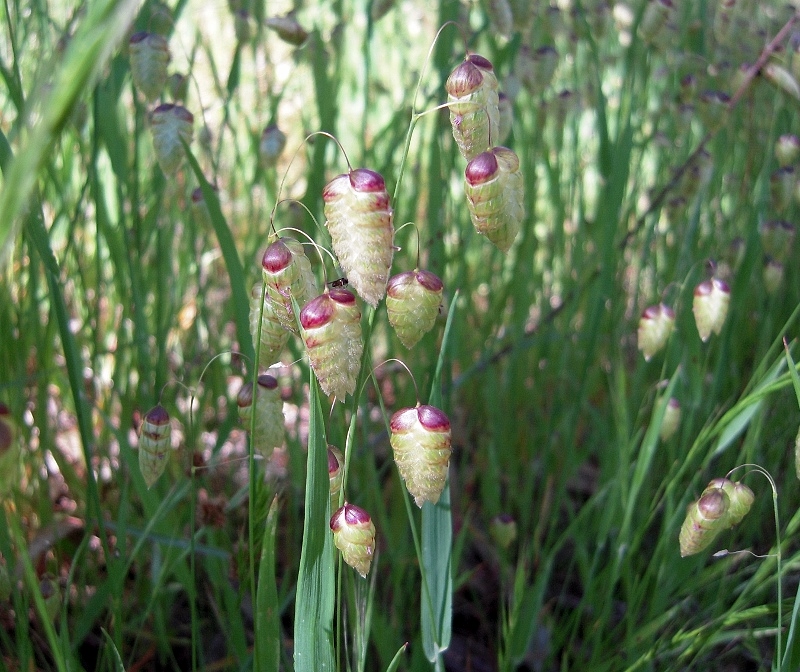Spring: great for wildflowers—and for weeds. We have a wide selection in our region, and villain of the month this November is Briza maxima. Quaking grass. Blowfly grass. Bee grass. And many other names. It’s a native of the Mediterranean lands—North Africa, the Middle East and Southern Europe. It’s been naturalised widely around the world in tolerant habitats, and seems to have come to Australia with pasture grasses, and as a garden ornamental.
A quick check on Google will yield numerous websites telling you what a wonderful plant it is for the garden, and you can even buy seeds on Ebay, shipped from Canada. This is one of the weird things about our culture: some people plant them, others have to worry about the consequences. Who was it who said gardeners have done more damage to our environment than miners?
B. maxima is serious environmental weed in Victoria, particularly the goldfields. Attractive though it is, it has the same problem as other weeds: it’s a bully. It forms dense clumps of hundreds of plants per square metre, excluding other plants and decreasing the diversity and richness of species. In our region it’s been said to compete with Sweet Bursaria, host plant of the Eltham Copper butterfly. We’re not sure about that one.
It gets into home gardens too. Fortunately, it can be easily pulled out–but it’s best to do it before those attractive seed heads fall.





 Click on image for info/order page
Click on image for info/order page Click on image for info/order page
Click on image for info/order page Click on image for info/order page
Click on image for info/order page




















